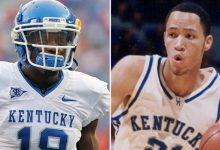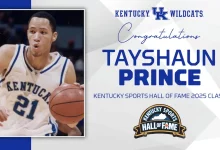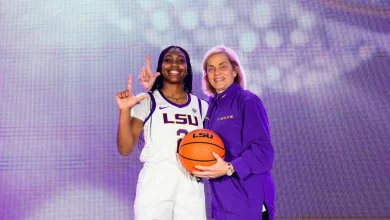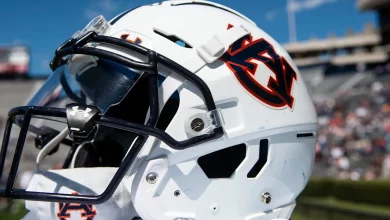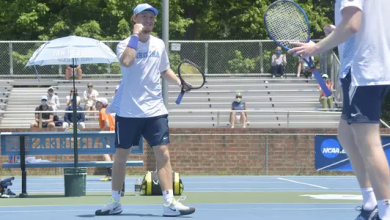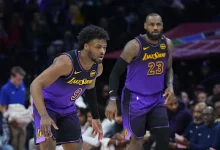Although Oklahoma experienced significant departures, the team remains strong at linebacker, with talented players ready to step up and maintain a solid defensive presence.
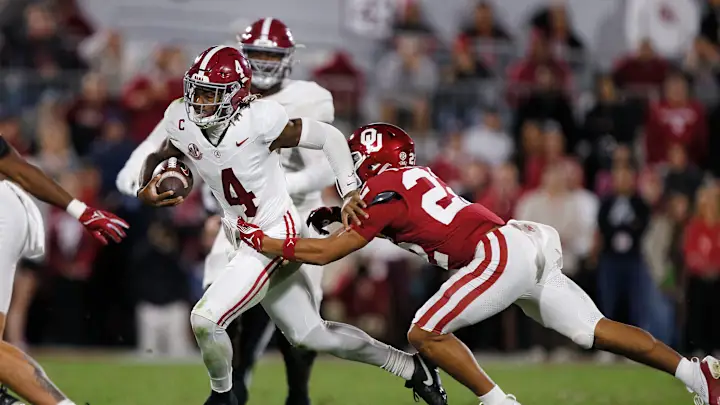
The linebacker position is often regarded as the heart of a defense, responsible for stopping the run, covering tight ends and backs in the passing game, and serving as defensive leaders. Oklahoma, historically known for its strong linebacker corps, has faced notable challenges recently due to key player departures. However, the program has also demonstrated resilience and depth, ensuring that it remains in excellent shape at this critical position heading into the 2024 season. This comprehensive analysis explores how Oklahoma navigates these roster changes, the talent currently available, emerging players, coaching strategies, and the overall outlook for the linebacker group.
1. The Significance of Linebacker in Oklahoma’s Defensive Scheme
Oklahoma’s defensive philosophy, especially under head coach Brent Venables, emphasizes physicality, disciplined gap control, and aggressive playmaking. The linebackers are central to this approach, tasked with stopping the run, covering short-to-intermediate passes, and providing leadership on the field. They are often the communicators of the defense, adjusting alignments and ensuring assignments are correct. The success of Oklahoma’s defense in recent years has been partly due to strong linebacker play, with standout players setting the tone.
2. Impact of Departures: Key Losses and Their Implications
The offseason saw several key linebackers move on, including graduations, transfers, and potential NFL departures. Notable losses may include:
Danny Stutsman: A team captain, Stutsman was a tackle machine, known for his instinctive play, leadership, and durability. His departure leaves a leadership void and a need for younger players to step into a vocal, reliable role.
Jared McKinney and David Ugwoegbu: Experienced backups who contributed significantly in rotation, their absence reduces veteran depth but opens opportunities for emerging players.
Transfers and NFL Draft: Other linebackers might have left for the NFL or transferred for playing opportunities elsewhere, which can impact depth, especially in the middle linebacker position.
The loss of these players, particularly someone of Stutsman’s caliber, is significant but not insurmountable. Oklahoma has focused on replenishing talent through high school recruiting, portal additions, and internal development.
3. Current Depth Chart and Returning Talent
Despite losses, Oklahoma’s linebacker depth chart remains promising, with a mix of experienced returnees and promising newcomers prepared to fill the void.
a. Inside Linebackers (Middle and Weak Side)
Jaron Willis: A transfer from Washington, Willis brings experience, leadership, and versatility. He has the size and athletic ability to be a sideline-to-sideline defender, capable of taking over as a primary inside linebacker.
Kip Lewis: A highly touted sophomore, Lewis impressed as a freshman with his speed, instincts, and athleticism. His development is crucial; he possesses the potential to become a team leader and top defender.
Derek LeBlanc: A returning senior, LeBlanc offers leadership, experience, and familiarity with the defense. His role may be more situational, providing depth and leadership.
David Ugwoegbu (if returning): A versatile linebacker with experience, Ugwwoegbu’s leadership and rotational ability provide valuable depth.
b. Outside Linebackers
Peyton Bowen: Although primarily a safety, Bowen’s hybrid skills and versatility could allow him to contribute at outside linebacker in certain packages.
Justin Harrington: A transfer or returning player who can contribute in multiple roles, including outside linebacker or hybrid spots.
Freshmen and Incoming Transfers: Oklahoma’s recruiting efforts have brought in promising prospects who could challenge for starting roles early.
4. Emerging Players and Young Talent
Oklahoma’s success at linebacker will depend heavily on development from younger or less experienced players. Some key prospects include:
Kip Lewis: His raw talent and athleticism make him a prime candidate for a starting role. With coaching and experience, he could emerge as a top-tier linebacker.
Anthony Evans: A younger player with size and speed, Evans could develop into a solid rotational linebacker or a starter in certain packages.
Freshmen Recruits: High school prospects such as Anthony Hill Jr. or Kobe McKenzie (if enrolled early) could make immediate impacts due to their athletic profiles and high recruiting rankings.
5. Transfer Portal and Its Role in Reinforcing Depth
The transfer portal has become a vital tool in college football, especially for teams seeking immediate impact and veteran leadership. Oklahoma has actively recruited experienced linebackers from other programs to fill gaps and add depth.
Transfer linebackers: Players from Power 5 programs who have demonstrated production and leadership can step in quickly, providing both depth and competition.
Impact of portal recruits: These players often bring physicality, experience, and maturity, which are essential in a team aiming to contend at a high level.
6. Coaching Strategy and Defensive Philosophy
Brent Venables’ defensive approach emphasizes disciplined gap control, aggressive pursuit, and versatile linebacker play. The coaching staff’s focus on fundamentals, tackling, and situational awareness ensures that even with departures, the linebacker group can excel.
Position versatility: Linebackers are asked to be multi-dimensional, able to rush the passer, cover in space, and stop the run.
Development emphasis: Oklahoma’s coaching staff invests heavily in developing linebackers’ instincts, coverage skills, and physicality, preparing them to adapt to various offensive schemes.
Leadership development: Even with key departures, coaching emphasizes fostering leadership qualities among younger players, ensuring the defense remains cohesive and disciplined.
7. Overall Outlook and Expectations for 2024
Despite losing a cornerstone like Danny Stutsman, Oklahoma’s linebacker corps remains in excellent shape due to:
Deep talent pool: The combination of returning players, portal additions, and incoming recruits provides a robust roster capable of competing at a high level.
Versatility and depth: Multiple players can fill various roles, allowing the coaching staff flexibility in game planning and adjustments.
Development pipeline: Oklahoma’s emphasis on player development ensures that younger players are prepared to step in and contribute effectively.
Leadership presence: Experienced transfers and returning players like Kip Lewis and Derek LeBlanc provide leadership and stability.
Defensive cohesion: The team’s defensive philosophy underscores disciplined, aggressive linebacker play, which can compensate for individual personnel changes.
8. Challenges and Opportunities
While Oklahoma’s linebacker group is strong, some challenges include:
Filling the leadership void left by a player like Danny Stutsman.
Ensuring young players develop quickly and adapt to the physical demands of college football.
Managing depth to withstand injuries and maintain consistent performance.
Opportunities involve:
Developing emerging stars like Kip Lewis into full-time leaders.
Leveraging versatile players for multiple roles.
Utilizing coaching expertise to maximize player strengths and scheme fit.
Why Oklahoma is in Great Shape at Linebacker
In conclusion, despite the significant departures from the linebacker position, Oklahoma’s overall program remains in excellent shape. The combination of experienced transfers, promising young talent, strategic recruiting, and a disciplined coaching approach ensures that the linebacker corps can uphold its reputation as a strength of the defense. The team’s focus on player development, versatility, and leadership continuity positions Oklahoma to not only compensate for losses but excel in 2024, maintaining a formidable linebacker group capable of anchoring a resilient defense.
This comprehensive overview underscores that Oklahoma’s linebacker position, while challenged by roster turnover, is well-positioned to remain a defensive strength. The depth, talent, and strategic planning in place give confidence that Oklahoma will continue to field a competitive, impactful linebacker corps in the upcoming season, setting the stage for continued success on the defensive side of the ball.

